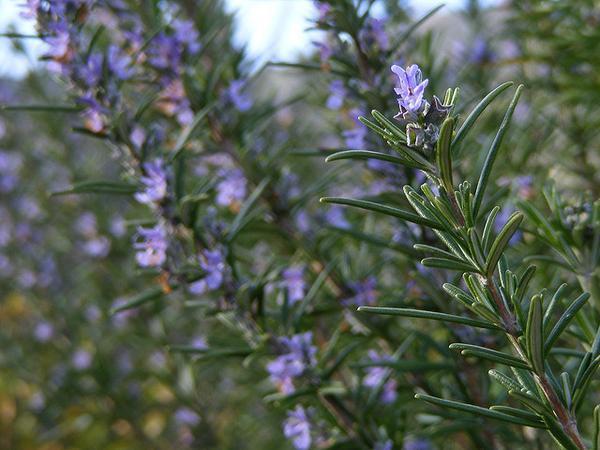Rosemary, Upright (Salvia rosmarinus)
Rosemary, Upright (Salvia rosmarinus)
Out of stock
Couldn't load pickup availability
Salvia rosmarinus
Rosemary
Rosemary is an aromatic, perennial, evergreen shrub in the Lamiaceae or mint family that is valued for its fragrant, ornamental foliage, and as an enhancement in cooking. The shrub grows from 4 to 5 feet tall and is generally erect and rounded. The aromatic, needle-like leaves are green on the upper surface, and the undersides are white and tomentose. The flowers are tiny, blue, lavender, or white, and are two-lipped and whorled around the square stems. It is frequently cultivated as an ornamental, as a culinary herb, or for use in sachets or potpourris.
It is native to Africa, Europe, Western Asia, and the Mediterranean and is found in dry, rocky areas.
The genus name, Salvia, is derived from the Latin word salvo which means "to save or heal." This refers to the medical uses of some plants in this genus. The epithet, Rosmarinus, comes from the Latin words ros meaning "dew," marinus meaning "sea," or in other words, "dew of the sea. " This is most likely a reference to the ability of this plant to thrive well in coastal areas, sea cliffs, and exposure to ocean mists.
Rosemary does best in light, slightly acidic, dry to medium, well-drained soils in full sun. It tolerates drought, partial shade, salt, heavy pruning, and most soil types except clay. It is easily transplanted and rooted. However, it has a low tolerance for wet, humid environments and requires careful tending in an appropriate spot. Once the bloom has passed, severely pruning is an option to encourage dense foliage growth. Rosemary plants are slow to germinate from seed, and gardeners might find more success propagating from stem cuttings, layering, or division.
Flowering usually begins in the spring and into summer and attracts butterflies, bees, and hummingbirds. There are many cultivars available that have varying habits and flower colors. American goldfinches will visit them for the seeds.
Rosemary is at home in many types of landscapes and gardens: butterfly, pollinator, children's, rock, winter, edible, and cutting gardens. Position it near a patio or in a play area. It is suitable for containers, as low hedges or borders, and in places where it can cascade.
Seasons of Interest:
Bloom: Spring and Summer
Foliage: Year-round
Insects, Diseases, and Other Plant Problems: Rosemary is generally pest and disease free. Monitor the plant for aphids, mealybugs, whiteflies, and spider mites, particularly if indoors. Poor circulation and high humidity can cause powdery mildew. Root rot and botrytis are common diseases. Overwatering is the common cause of plant decline or death. Rosemary can be difficult to overwinter indoors.
Plant Characteristics
Growing Conditions
Light Requirement: Full SunSoil Texture: High Organic Matter, Loam (Silt), Shallow Rocky
https://plants.ces.ncsu.edu/plants/salvia-rosmarinus/
Image Information
Photographer: Costa, Gil

